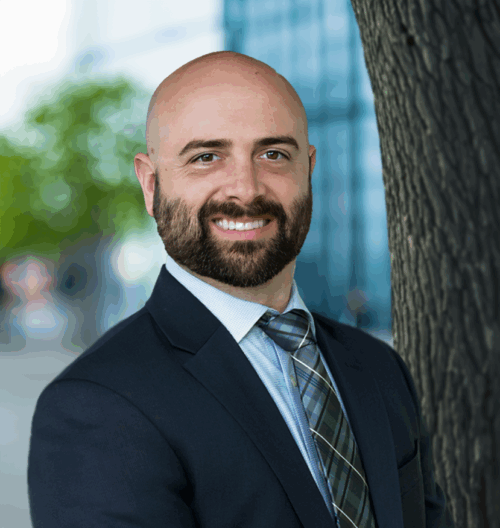In Summary
- SECURE 2.0 Act Simplifies Hardship Withdrawal Administration: Section 312 of the SECURE 2.0 Act grants plan sponsors of 401(k), 403(b), and 457(b) plans relief by permitting reliance on an employee’s written certification that the distribution meets the requirements for immediate need, necessary amount (including taxes), and lack of alternative means, unless the administrator has contrary knowledge.
- IRS Safe Harbor Defined Immediate and Heavy Need: To avoid subjective determinations, plans may adopt a safe harbor list of seven specific circumstances that automatically qualify as an immediate and heavy financial need, including medical care, costs for a principal residence purchase, tuition expenses, preventing eviction or foreclosure, funeral expenses, and certain damage repairs to the principal residence.
- Employee Self-Certification Can Be Guided by IRS Memo: While the SECURE 2.0 Act provides no specific language, an IRS memo to examiners suggests detailed information categories that can serve as a template for audit-proof employee self-certification forms, covering general information (cost, amount requested) and specific details for each type of qualifying hardship.
_______________________________________________________________________
 Plan sponsors of retirement plans with hardship withdrawal provisions have come to realize that complying with hardship rules is sometimes a hardship. One of the most common questions we receive from clients involves the administration of the hardship withdrawal provisions.
Plan sponsors of retirement plans with hardship withdrawal provisions have come to realize that complying with hardship rules is sometimes a hardship. One of the most common questions we receive from clients involves the administration of the hardship withdrawal provisions.
Changes from the SECURE 2.0 Act
Luckily, the SECURE 2.0 Act in Section 312 has provided relief to those plan sponsors that administer hardship withdrawals by allowing them to rely on written certification that the distribution is:
- On account of an immediate and heavy financial need, as defined,
- Not in excess of the amount required to satisfy the financial need including required taxes, and
- That the employee has no alternative means reasonably available to satisfy such financial need.
Despite these simplified provisions, Section 312 does indicate that if an administrator has knowledge contrary to the employee’s certification, then the administrator may need to perform further procedures, which may include obtaining further proof or denying the request.
This change in the hardship withdrawal provisions applies to 401(k), 403(b), and 457(b) plans.
Immediate and Heavy Financial Need
One question that comes up is what does immediate and heavy financial need mean? This will generally depend on whether the plan document allows the plan sponsor to exercise discretion over whether the facts and circumstances constitute an immediate and heavy financial need. For plan sponsors who don’t want the responsibility of making subjective determinations, the IRS regulations provide a “safe harbor” definition of an immediate and heavy financial need as follows:
- Medical Care Expenses – for the employee, the employee’s spouse, dependents, or beneficiaries.
- Purchase of Primary Residence – Costs directly related to the purchase of an employee’s principal residence. Note that this excludes mortgage payments.
- Tuition and Related Fees – Tuition, related educational fees and room and board expenses for the next 12 months of postsecondary education for the employee or the employee’s spouse, children, dependents, or beneficiary.
- Prevent Eviction or Foreclosure – Payments necessary to prevent the eviction of the employee from the employee’s principal residence or foreclosure on the mortgage on that residence.
- Funeral Expenses – for the employee, employee’s spouse, children, dependents, or beneficiary.
- Damage to Primary Residence – Certain expenses related to the repair of the employee’s principal residence that would qualify for the casualty deduction under section 165 (determined without regard to section 165(h)).
- Expenses and Losses on Account of Federally Declared Disaster – provided that the employee’s principal residence or principal place of employment was located in the disaster zone.
Amount Required to Satisfy Need and Alternative Sources
The next step after establishing that there is an immediate and heavy financial need is to compute the permitted hardship withdrawal amount and whether there is an alternative way to satisfy it. These two requirements are straight-forward. An employee may only receive a hardship withdrawal in the amount needed to cover the immediate and heavy need grossed up for taxes, and no more. Additionally, an employee must certify that there are no other available funds to cover the expense, such as: insurance, liquidation of assets, or commercial loans. The participant will need to use those other funds first before requesting a hardship withdrawal; however, if using those funds would cause an additional hardship then the participant would be allowed to take a hardship withdrawal from his or her account.
Employee Certification
A logical question would be what should the written certification look like? The SECURE 2.0 Act does not provide any sample language. However, on February 23, 2017, the Acting Director of IRS EP Examinations provided a memo to agents regarding substantiation guidelines. This memo was circulated in the March 2nd IRS newsletter. Although this was not a law or subject to use or reliance as official guidance, the memo provided detail on the information that agents would request that the plan administrators could use as a road map to process hardship withdrawals. Although, the SECURE 2.0 act does not provide sample language needed for the certification, the IRS memo to its agents is a good resource that provides a reasonable self-certification alternative that is not too intrusive from the participants’ perspective and not an onerous burden for the employer.
Many recordkeepers have developed standard forms for employee certification including the following checklist of items suggested by the memo:
- General Information
- Participant’s name
- Total cost of the event causing hardship (for example, total cost of medical care, total cost of funeral/burial expenses, payment needed to avoid foreclosure or eviction)
- Amount of distribution requested
- Certification by the participant that the information provided is true and accurate
- Specific Information on Hardship Types
- Medical Care
- Who incurred the medical expenses (name)?
- What is the relationship to the participant?
- What was the purpose of the medical care (not an actual condition but general category of expense such as diagnosis, treatment, prevention, associated transportation, long-term care)?
- Name and address of service provider
- Amount of medical expenses not covered by insurance
- Purchase of Principal Residence
- Will this be the participant’s principal residence?
- Address of the residence
- Purchase price of the principal residence
- Types of costs and expenses covered (down-payment, closing costs and/or title fees)
- Name and address of the lender
- Date of the purchase/sale agreement
- Expected date of closing
- Educational Payments
- Who are the educational payments for (name)?
- Address of the residence
- Type of event (foreclosure or eviction)
- What is the relationship to the participant?
- Name and address of the educational institution
- Categories of educational payments involved
- Period covered by the educational payments
- Foreclosure/Eviction from Principal Residence
- Is this the participant’s principal residence?
- Who are the educational payments for (name)?
- What is the relationship to the participant?
- Name and address of the party that issued the foreclosure or eviction notice
- Date of the notice of foreclosure or eviction
- Due date of the payment to avoid foreclosure or eviction
- Funeral and Burial Expenses
- Name of the deceased
- Relationship to the participant
- Date of death
- Name and address of the service provider
- Repairs for Damage to Principal Residence
- Is this the participant’s principal residence?
- Address of the residence that sustained damage
- Brief description of the cause of loss
- Brief description of the repairs, including the date(s) of repair
- Medical Care
Using the above list as a template should be sufficient to audit-proof hardship distribution processing using employee self-certification. Of course, don’t forget that if the employer has knowledge contrary to the employee’s statements, further documentation or a denial of the hardship request may become necessary.
In the end, it appears Congress has understood the hardship of administering hardship provisions. Other SECURE 2.0 Act provisions may not offer simplification for employers, but at least hardship administration requirements are simpler.
